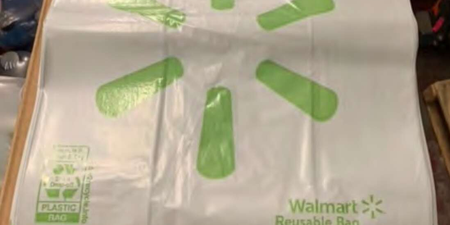
Kane County Recycles Rates the Reusable Bag - Series Part Two
The first municipal single use checkout bag ordinance passed in Kane County will be going into effect in the City of Batavia on July 1st, and large stores in the City with over 5,000 square feet of retail space, will start charging 10 cents for each single use carryout bag, both paper and plastic. It will not apply to bags used to hold bulk food, bakery items, produce, flowers and potted plants. It also does not apply to bags used by restaurants and cafes. The goal of single use bag fees is to encourage customers to shop with reusable bags.
In the run-up to the ordinance taking effect, the Kane County Recycling Program is writing up some reusable bag reviews, because not all bags are created equal! This is the second installment, focusing on non-woven synthetic bags. Last time, we looked at natural fiber bags, and you can see that here. Bag are rated on a number of factors, including sustainability, durability, and how easy they are to wash and store. In all cases, 1 is a poor score, and 5 is the best. In each series, we include our ratings for single use paper and plastic bags as a basis for comparison.
Our ratings and reviews for synthetic non-woven bags
Thick film - Overall Score = 3/5
The thing about regular plastic grocery bags that makes them presumed to be used only one or two times is that they are very thin. Half the time, when you get a thin plastic bag at the store, it already has small holes in it. Hopefully folks find the holes before they try to reuse them as pet waste bags… One obvious solution is to make bags with the same materials and same process - just make them thicker. The thickness of plastic film is generally measured in mils, where 1 mil is equal to one thousandth of an inch. An industry standard single use plastic grocery bag is 2 mils thick. Some states have passed legislation that a film bag must have a thickness of at least 4 mils (double thickness) to be considered reusable. This does indeed make film bags more durable, but still prone to puncture if overloaded or if used to carry sharp or odd-shaped items. Another cultural issue is that these bags look so similar to regular thin grocery bags that people don't think of them as reusable and still bin them after just one use, or give them a final use for a job that a thinner bag could handle (pet waste, small trash can liner, etc.). All film bags can be recycled at grocery drop-offs, but thicker bags really only justify their extra material if they are reused at least a few times. They fold fine for storage, but washing is limited to hand-washing and air drying. Overall, we'll score these just a bit better than thin film bags.
Waffle Polypropylene - Overall Score = 2.5-to-3/5
The technical term for this fabric is non-woven polypropylene. Polypropylene fibers are arranged in a web formation, and then heat and/or pressure are applied to turn the fibers into a cohesive non-woven fabric. The resulting fabric usually has a small, waffle-like grid pattern. It can be made in many colors and printed with patterns and logos. The fabric can be made into bags through traditional sewing with thread or industrial techniques that use electric current or head to bond the seams. These reusable bags are cheap and lightweight. The problems are that the fabric is not as strong as other options we're looking at (canvas, woven synthetics), construction quality can vary a lot with poorly constructed bags prone to breaking at the handles, they absorb liquids and stain easily, are annoying to fold and store since the fabric doesn't hold folds well, and though technically they are machine washable, washing will often cause damage, likely creates a lot of microplastic pollution, and machine drying is not recommended. These bags use about 30 times more resources than regular single use bags and often lack the durability that ensures they actually can be reused for long enough to make up for it. We'll give these bags a score range of 2.5 - 3 stars depending on the quality of the specific bag. Bags with a reinforced bottom and with either obviously reinforced non-woven polypropylene handles or woven handles are likely to be more durable and earn an extra half star.


